The journey begins
Salut tout le monde! The new year took off with a bout of excitement, as it marked the beginning of our travels. Soon after our exams, each of the scholars left Tianjin for five to six weeks – some to go home, some to travel China, and others to Southeast Asia – to see more of the world than ever before.
Family Reunion
My travels began with seeing my family for the first time in four months. Once exams were out the way, I went to Beijing airport, prepared with a large “Welcome to China” sign, to pick up my mum, dad, and older brother. I was overjoyed when I finally saw them face-to-face, and we talked non-stop all the way to Tianjin, discussing everything that had happened since I left home.
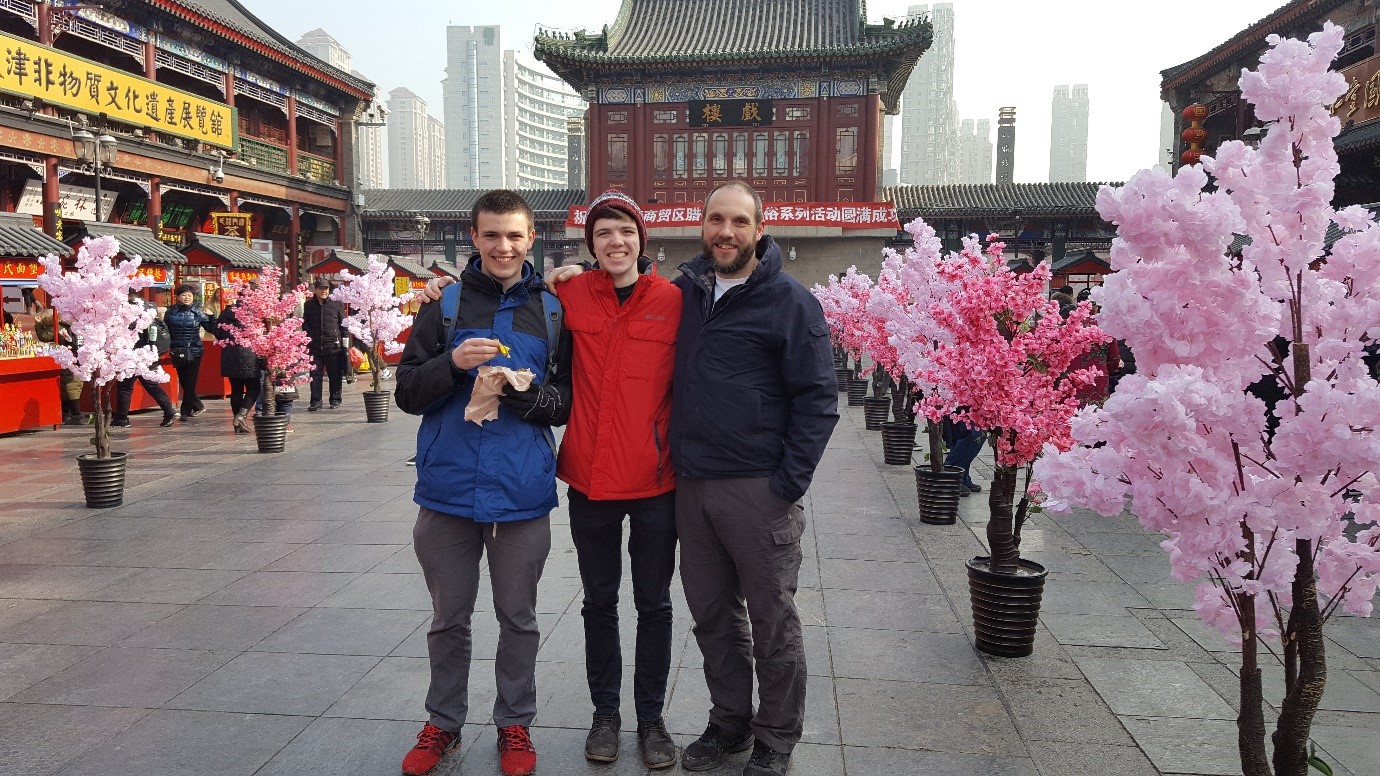
Ancient Culture Street (with me tucking into a jiānbing guǒzi (savoury crepe))
For the next few days I showed them around Tianjin’s sights such as Ancient Culture Street (a traditional Chinese alleyway selling food and souvenirs) and took them out for meals with local friends. They’d kindly brought over some treats from home like Highland Spring water, Terry’s Chocolate Orange, and even a yarn set of bagpipes knitted by a friend (thank you Linda!). On our last evening in Tianjin, we made ginger cake and custard using the microwave on the hotel’s seventh floor – it didn’t exactly come out Michelin star quality, but it was a fun and nostalgic thing to do.
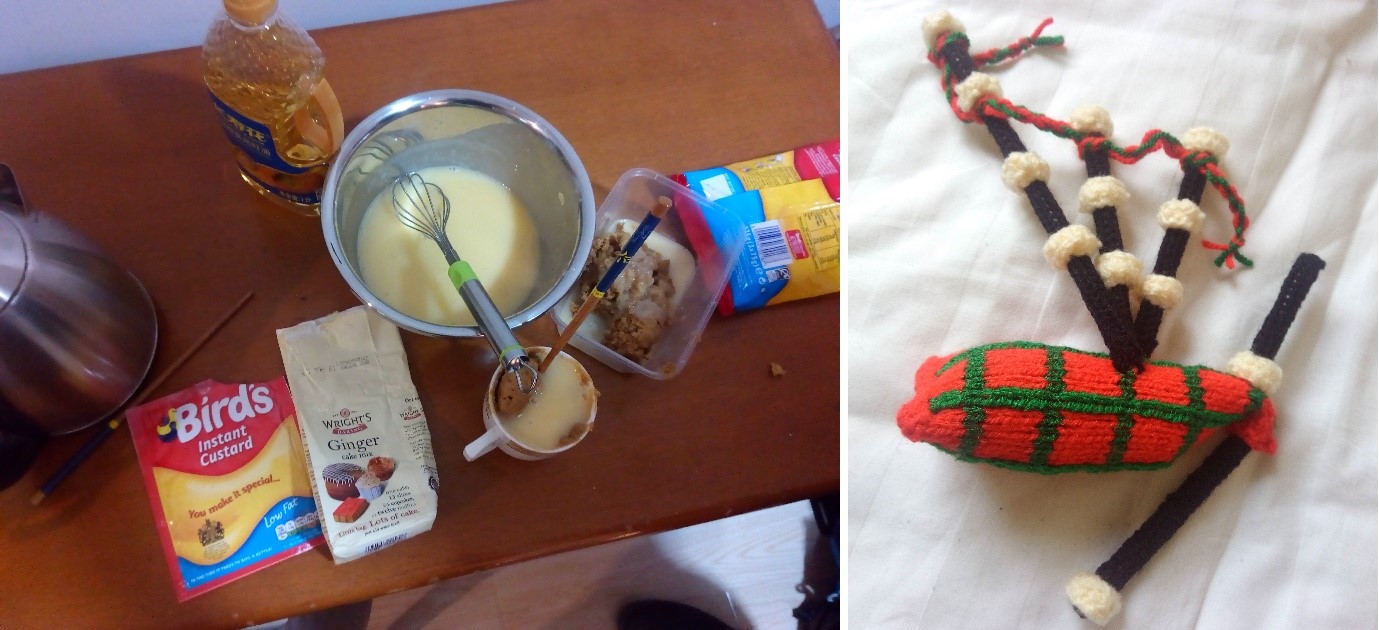
The visit from my family drastically changed how I saw my life in China. Since leaving home I often felt like a completely different person, disconnected from my previous life. Now that my family has come and connections have been made, I feel a lot more stable – assured that I am the same person who left home four months ago. I also had a very grown-up feeling guiding my family through China, being the one who pointed out the sights, negotiated prices and talked with taxi drivers, instead of the other way around!
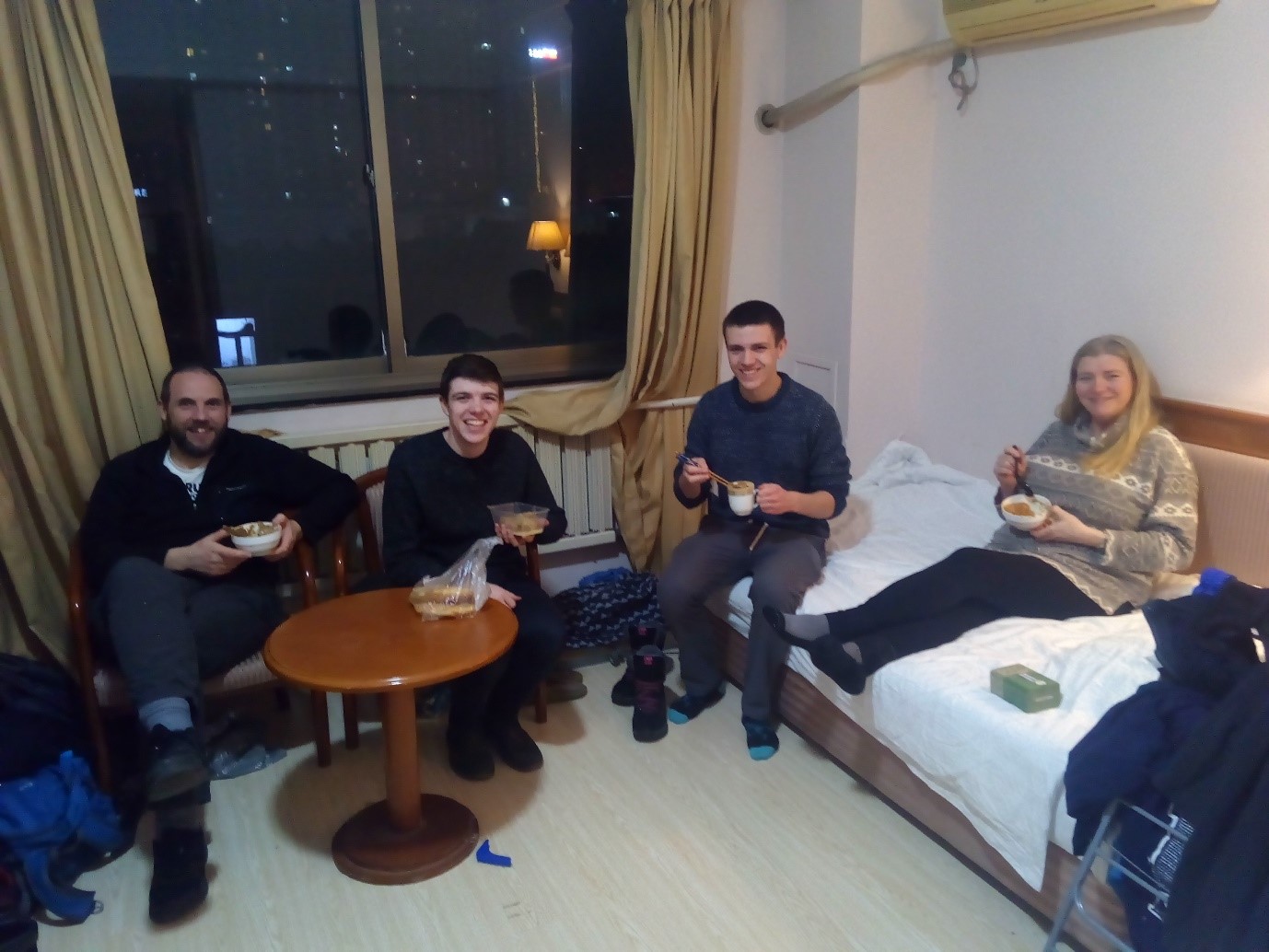
Having dessert in my room
Beijing (15-19 January)
Soon it was time to leave Tianjin and begin my adventure. I started by hopping on a 30-minute bullet train to the capital with my family, where we took part in a breakfast tour in the narrow alleyways (known as “Hutongs”) of downtown Beijing. The atmosphere in the Hutongs was a lot quieter and more laid back than the rest of the city, and our guide took us to several small restaurants to try the local food. We started by trying yóu tiáo (fried dough sticks dipped in sour milk), then dumplings, savoury lamb pancakes, lamb broth, eggs boiled in tea, bāo zi (steamed buns filled with meat or vegetables) and finished in a nice little coffee shop.
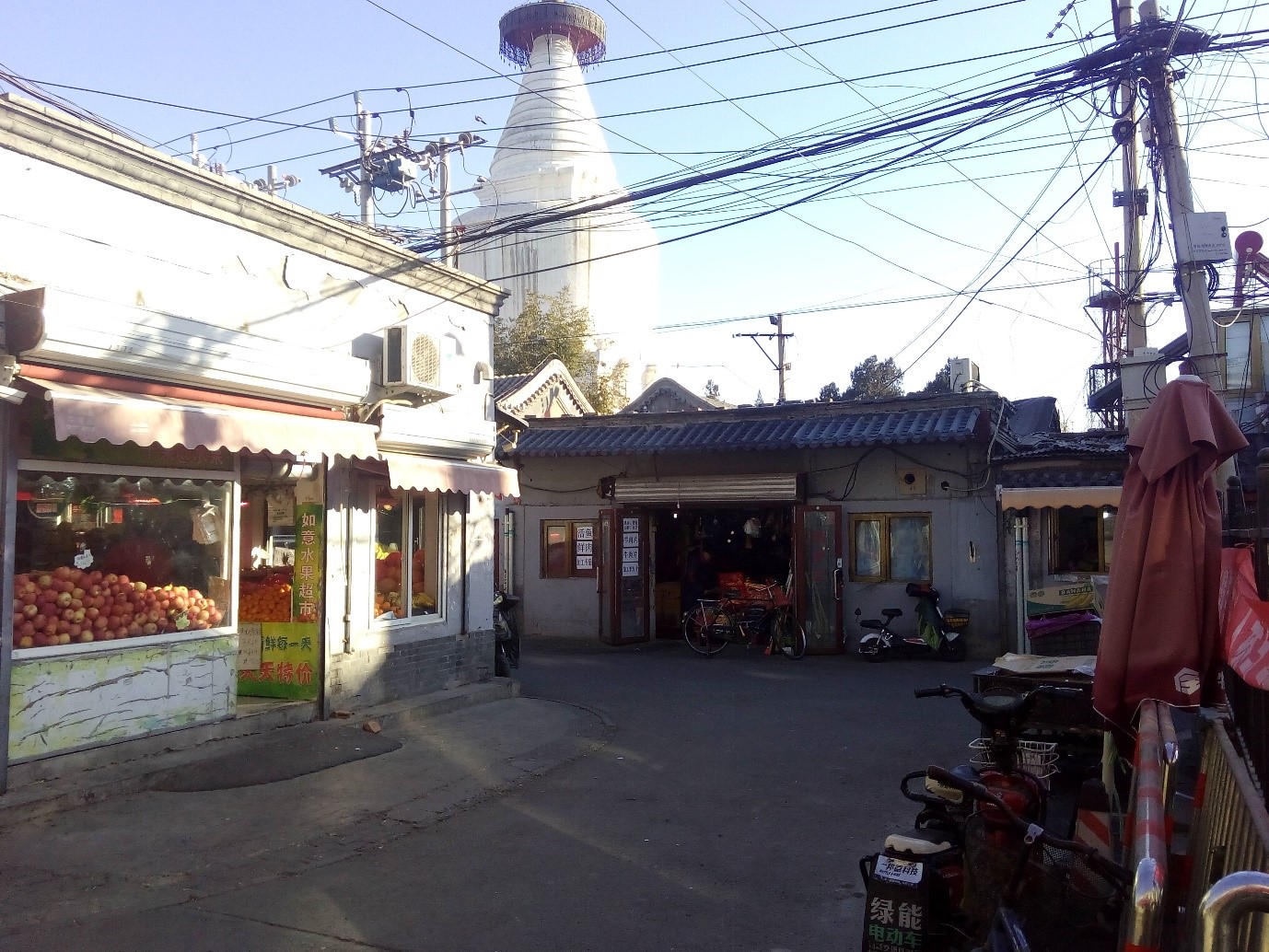
Hutong with a stupa (Buddhist monument) in the background
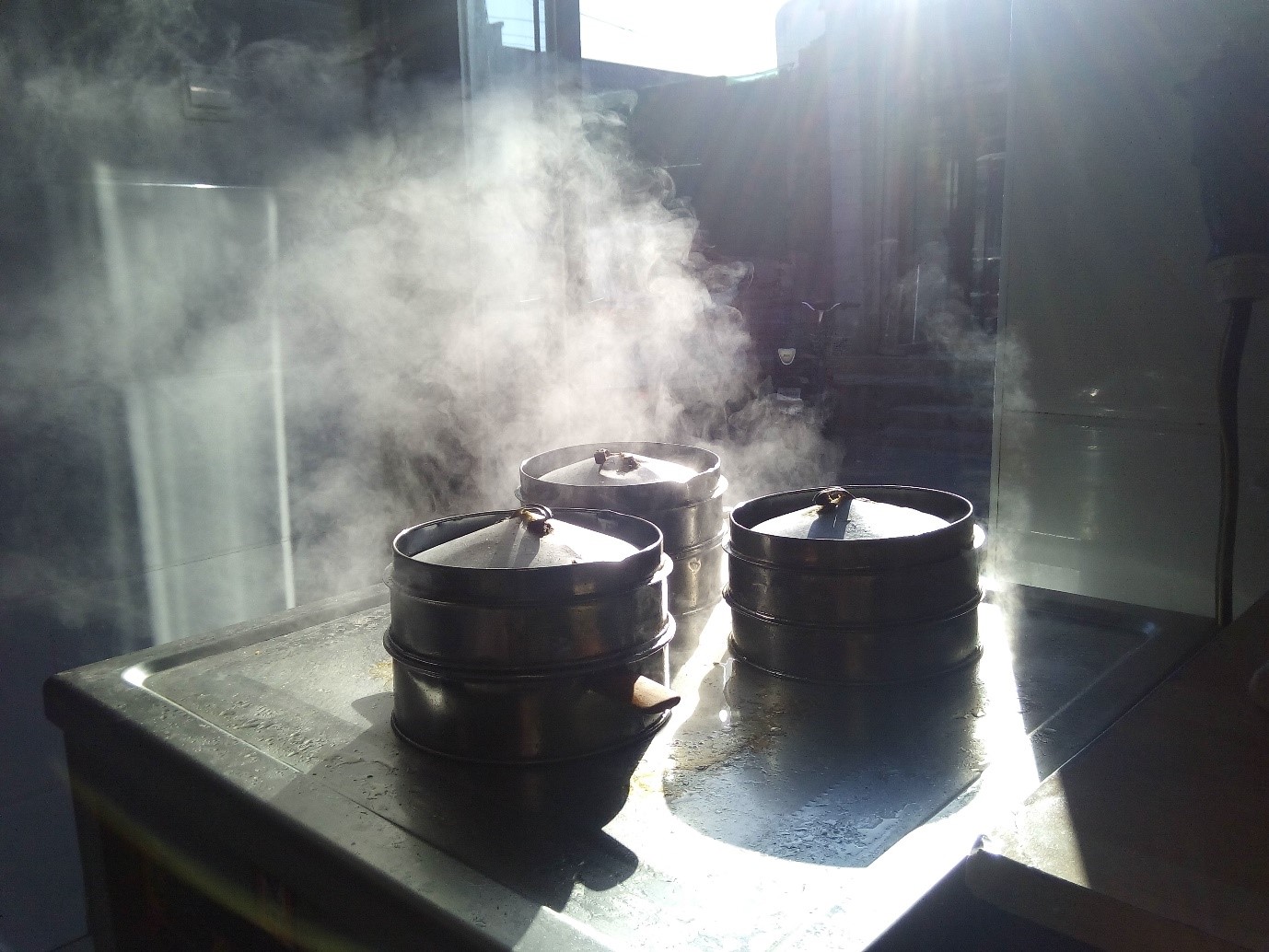
Bāo zi being steamed at a local restaurant
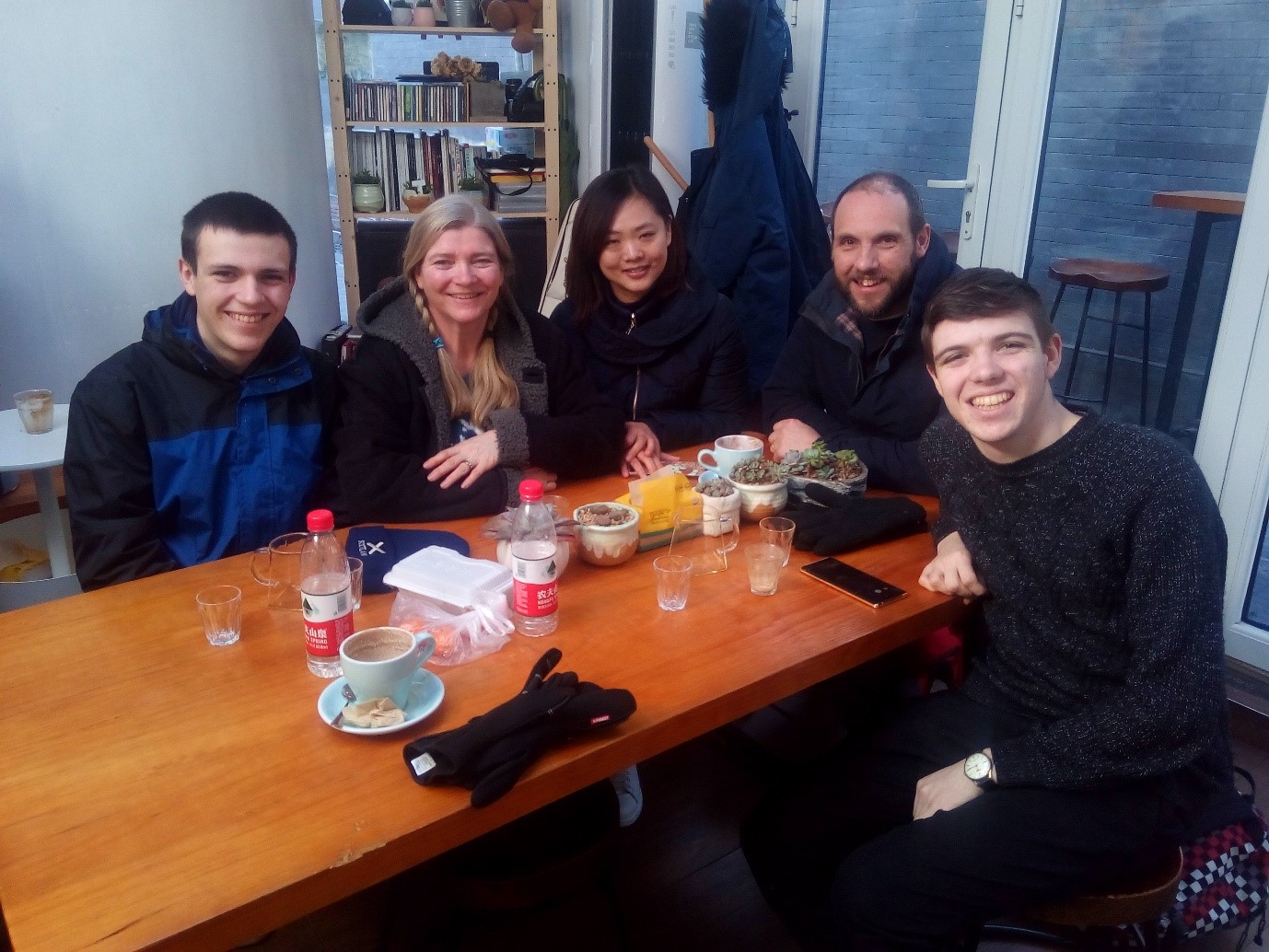
Ending the tour with a decent cuppa
It was a great morning to learn more about China’s rich food culture, and our guide even told us legends behind the dishes we ate. For example, she told us that yóu tiáo originated from an official in the Song Dynasty which many people hated for putting a heroic Chinese general to death. As a form of silent protest, the common people would take two dough sticks (representing the official and his wife), plunge them into hot oil and eat them – afterwards it became a popular breakfast snack.
Over the next few days we explored Beijing’s famous sights, such as Tiananmen Square, the Forbidden City, the Summer Palace and the 2008 Olympic Stadium.
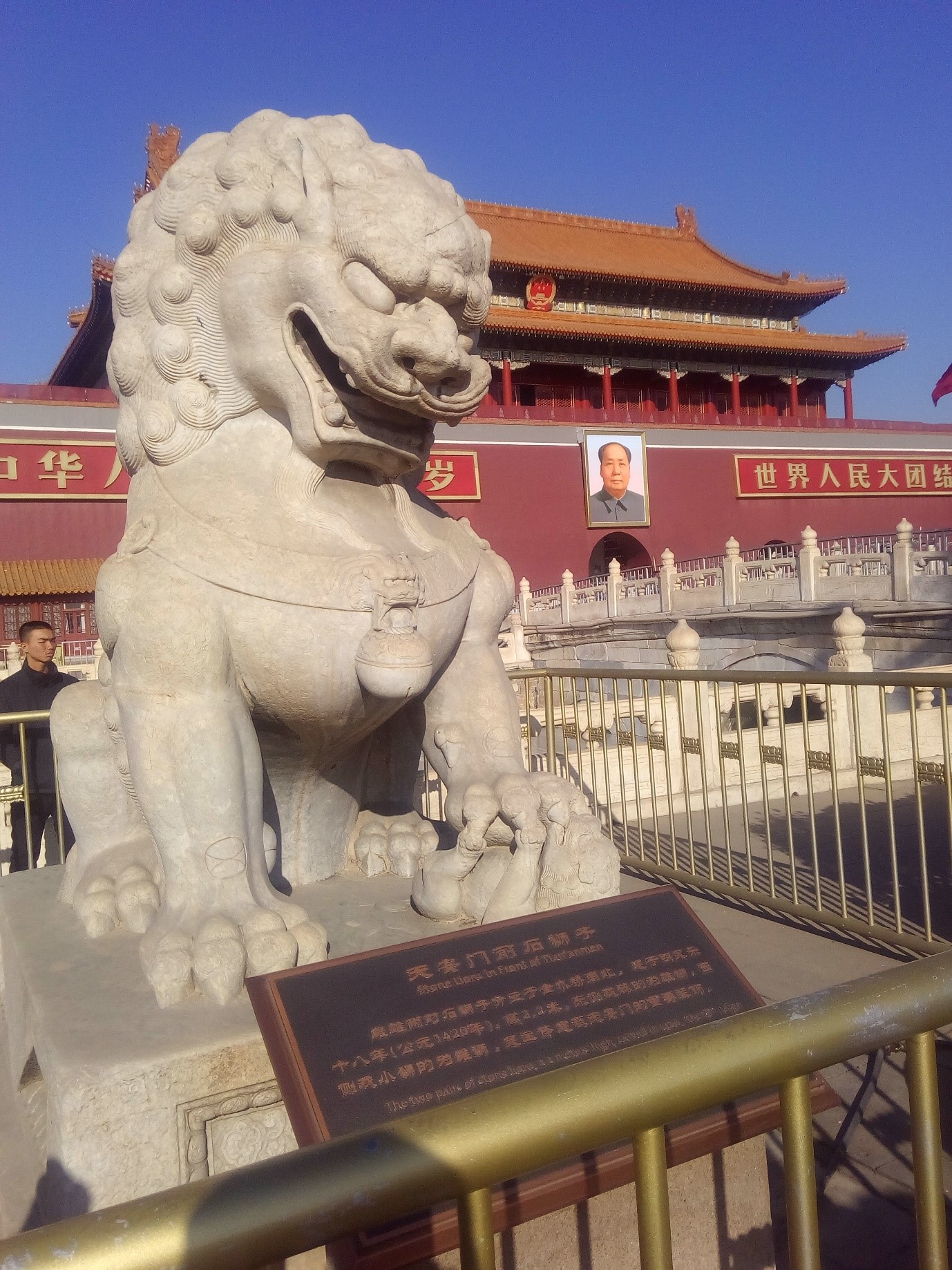
Tiananmen Square (centre of Beijing; most iconic landmark in China)
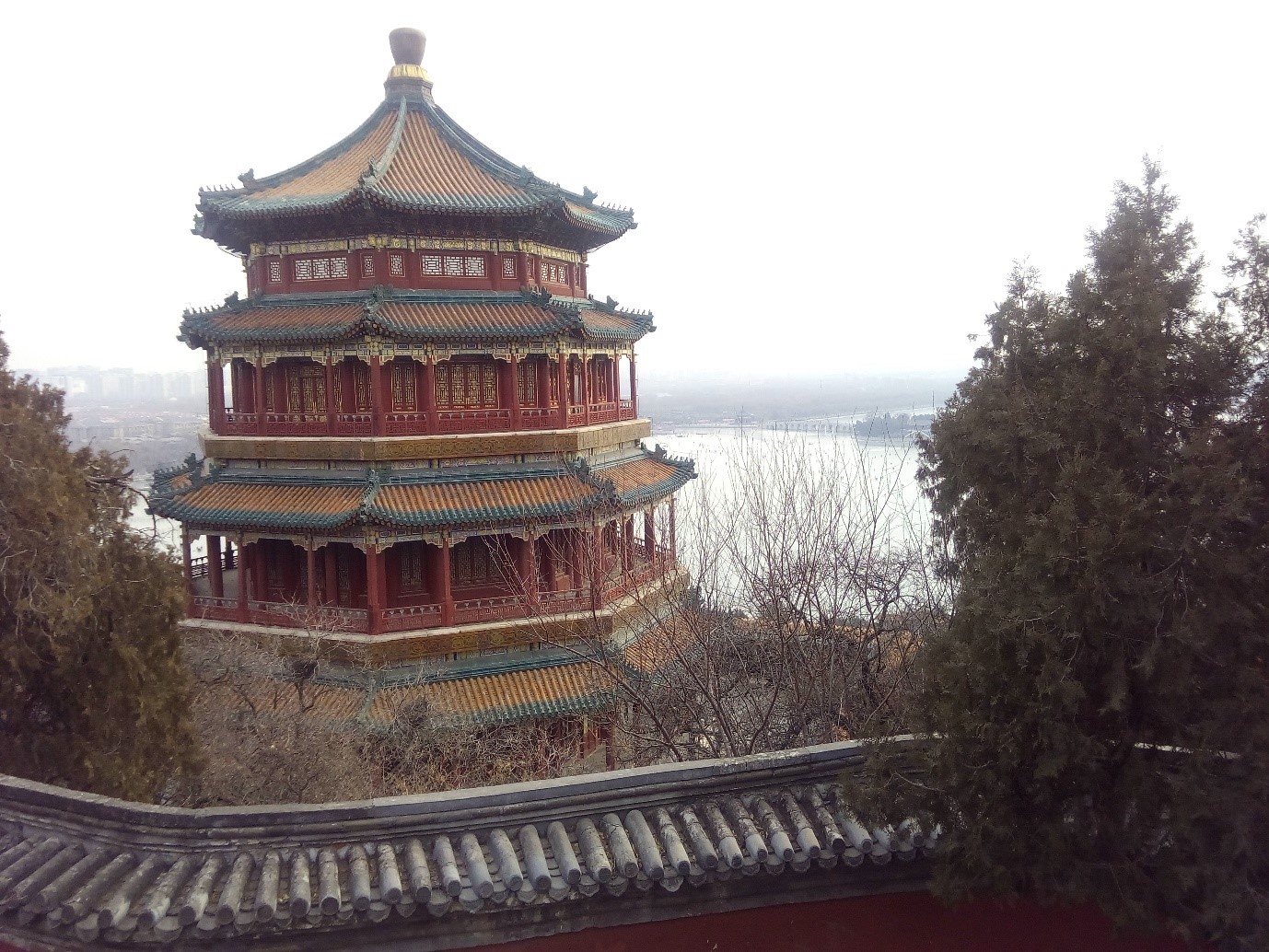
The Summer Palace (outskirts of Beijing)
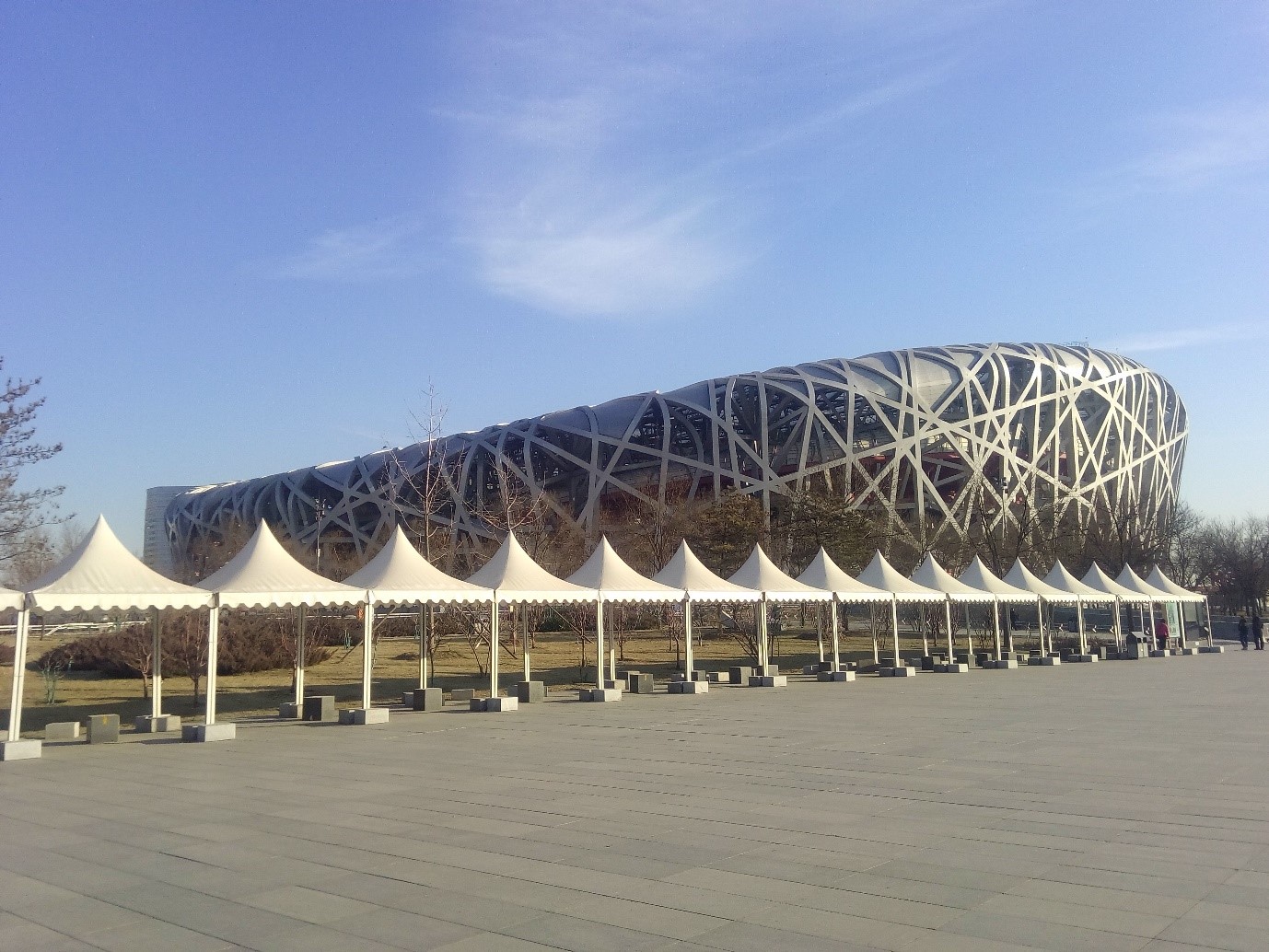
The “Bird’s Nest” Olympic Stadium
On our last night, we were taken out for dinner by a Chinese student who had stayed with us last year on Airbnb. It was a strange but very pleasant feeling to be at the other side of the world and meet someone who’d spent a night in our house!
Overall Beijing felt a lot more fast-moving and cosmopolitan than Tianjin, but the grand, ancient Imperial side of China was still clearly present. I especially enjoyed seeing the quieter, more local neighbourhoods in the Hutong area, which showed Beijing was far more than skyscrapers and traffic jams. The next morning, I took my brother to the airport for his flight home, then left with my parents on a 13-hour sleeper train to our next destination…
Xi'an (19-22 January)
Xi’an is a city of about ten million people in central China, and it’s been on my bucket list for a while. Chinese culture has over 5,000 years of history, and there’s no better spot to appreciate this than Xi’an. It was the capital city of China under several emperors, and many of the ancient sights are still standing.
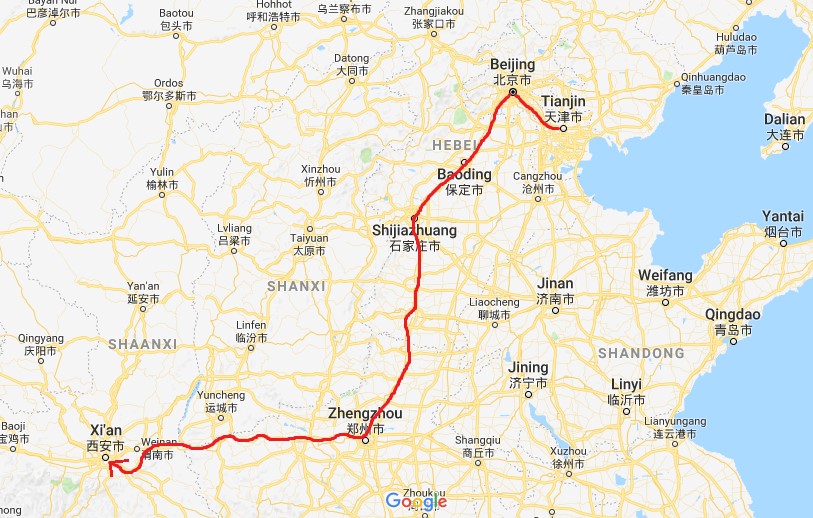
The moment I came out of Xi’an train station was a moment to remember, as we found ourselves face-to-face with the ancient city wall – standing 12 metres high and 14 thick – surrounding the inner district of Xi’an. When I saw the wall, I struggled to take my eyes off it – here was one of Xi’an’s ancient relics, but instead of being in a glass cabinet it was a massive, integral part of the city. Modern buildings stood either side of the wall, and normal traffic passed under it.
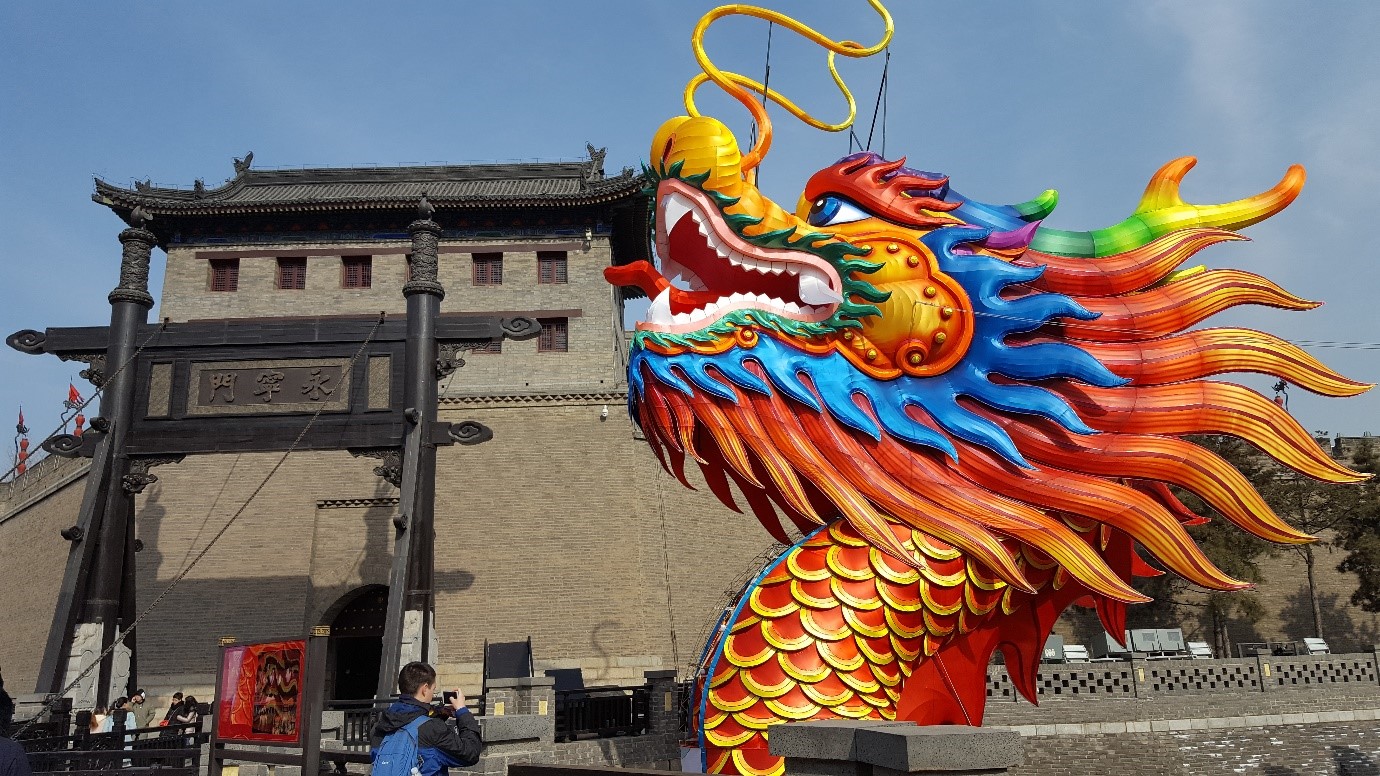
South gate of the city wall
We spent our first afternoon riding on top of the wall on rented mountain bikes, as the scholars who’d been there in October had recommended. It gave us a good aerial view of the city, and we could appreciate the antiquity of the wall while doing something fun and active at the same time.
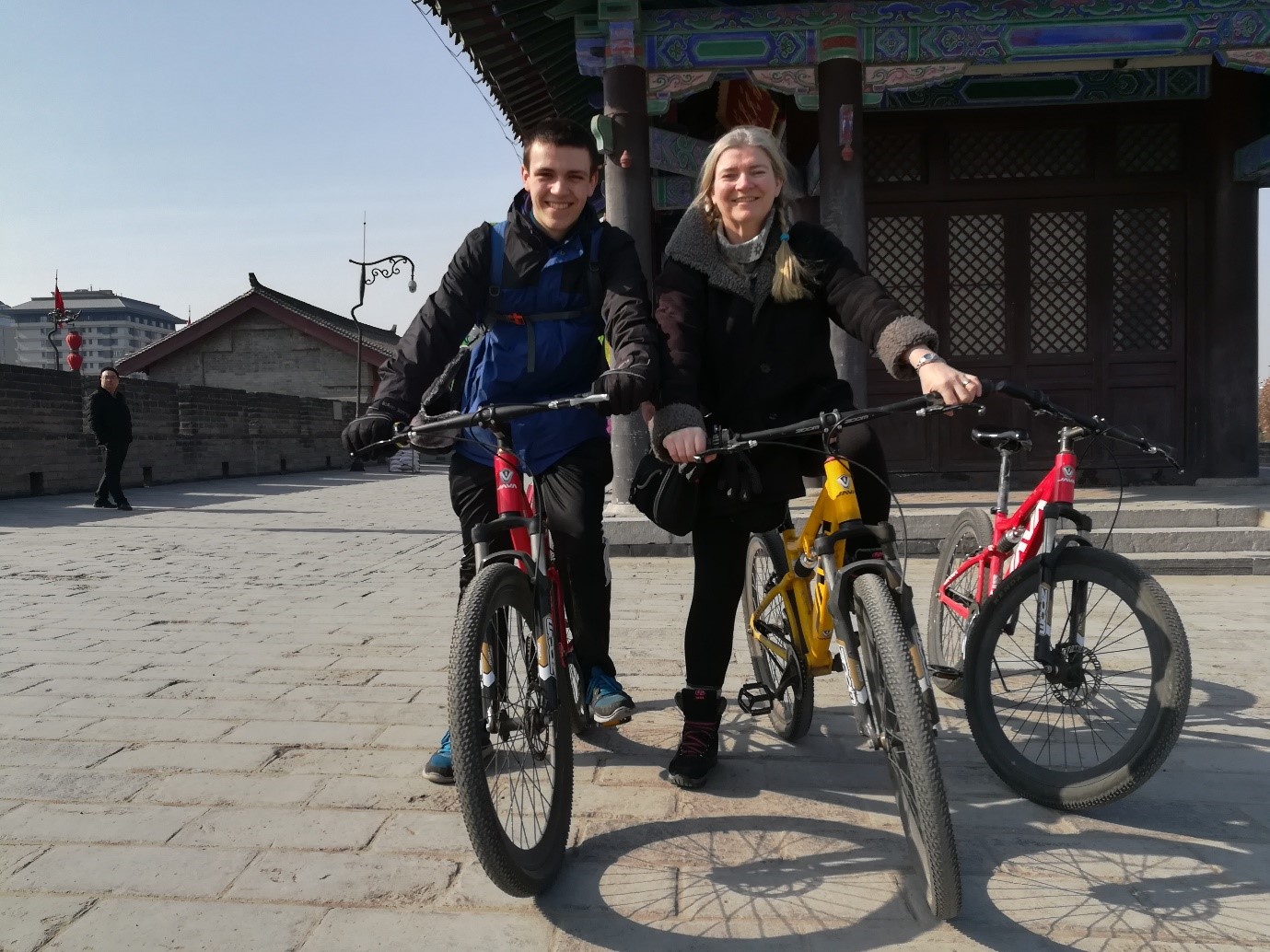
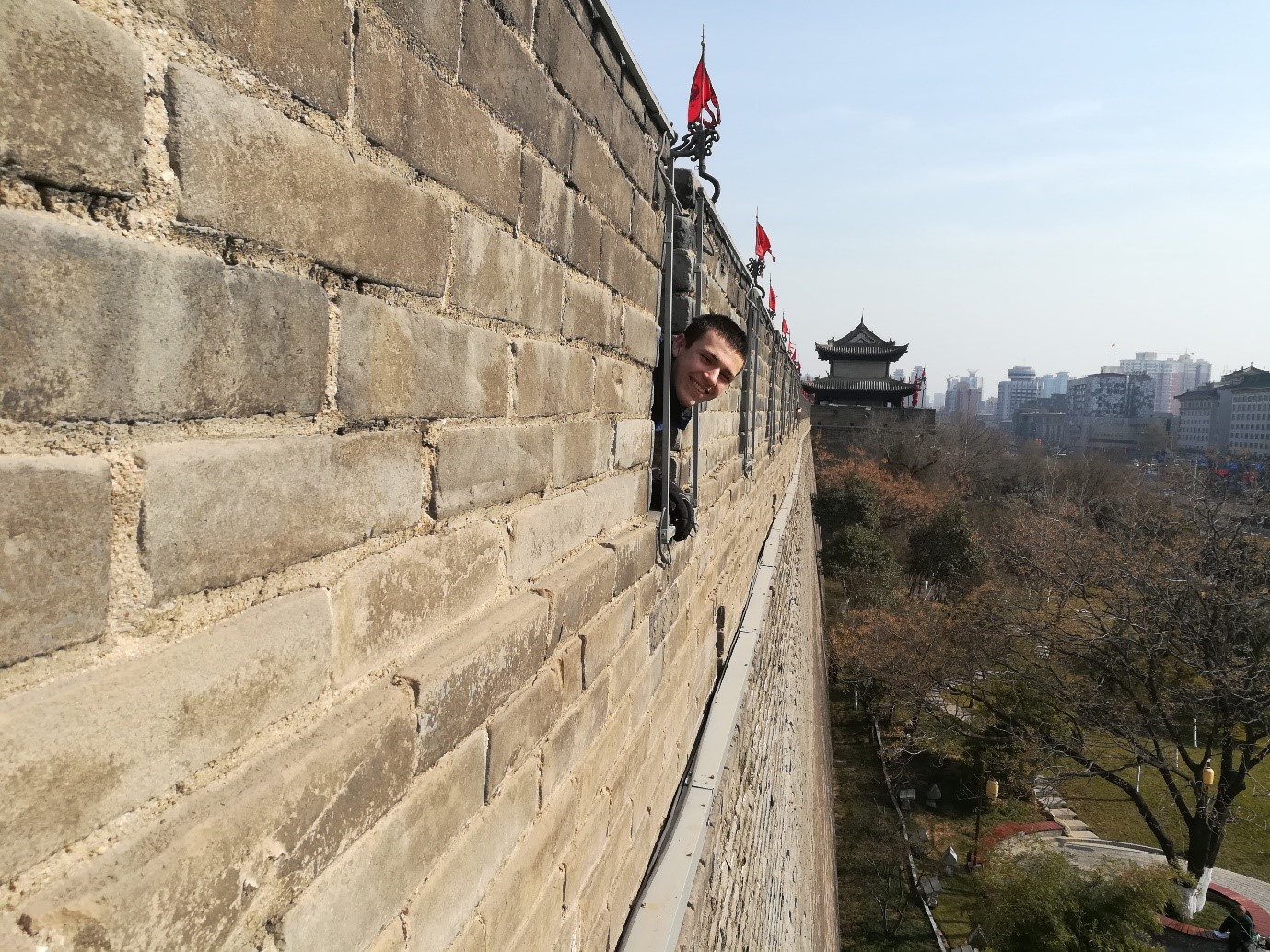
In the evening we joined another food tour, this time through Xi’an’s crowded Muslim Quarter in an electric tuk-tuk. Xi’an is the starting point of the Silk Road – an ancient trade route between Asia and Europe – so a lot of Muslim influence has come into Xi’an over the years, bringing some of the tastiest food in China. As our tuk-tuk driver fearlessly barrelled through the bumpy, overcrowded alleyways, we stopped at various restaurants to taste the local specialties, such as biáng biáng miàn – a very wide and stodgy kind of noodle made by whacking dough forcefully against a hard surface (the best noodles I’ve ever eaten) – and ròu jiā mó – flatbread stuffed with stewed beef, cumin and pepper, commonly known as “Chinese hamburger”. Suffice to say, by the end of the evening I was stuffed.
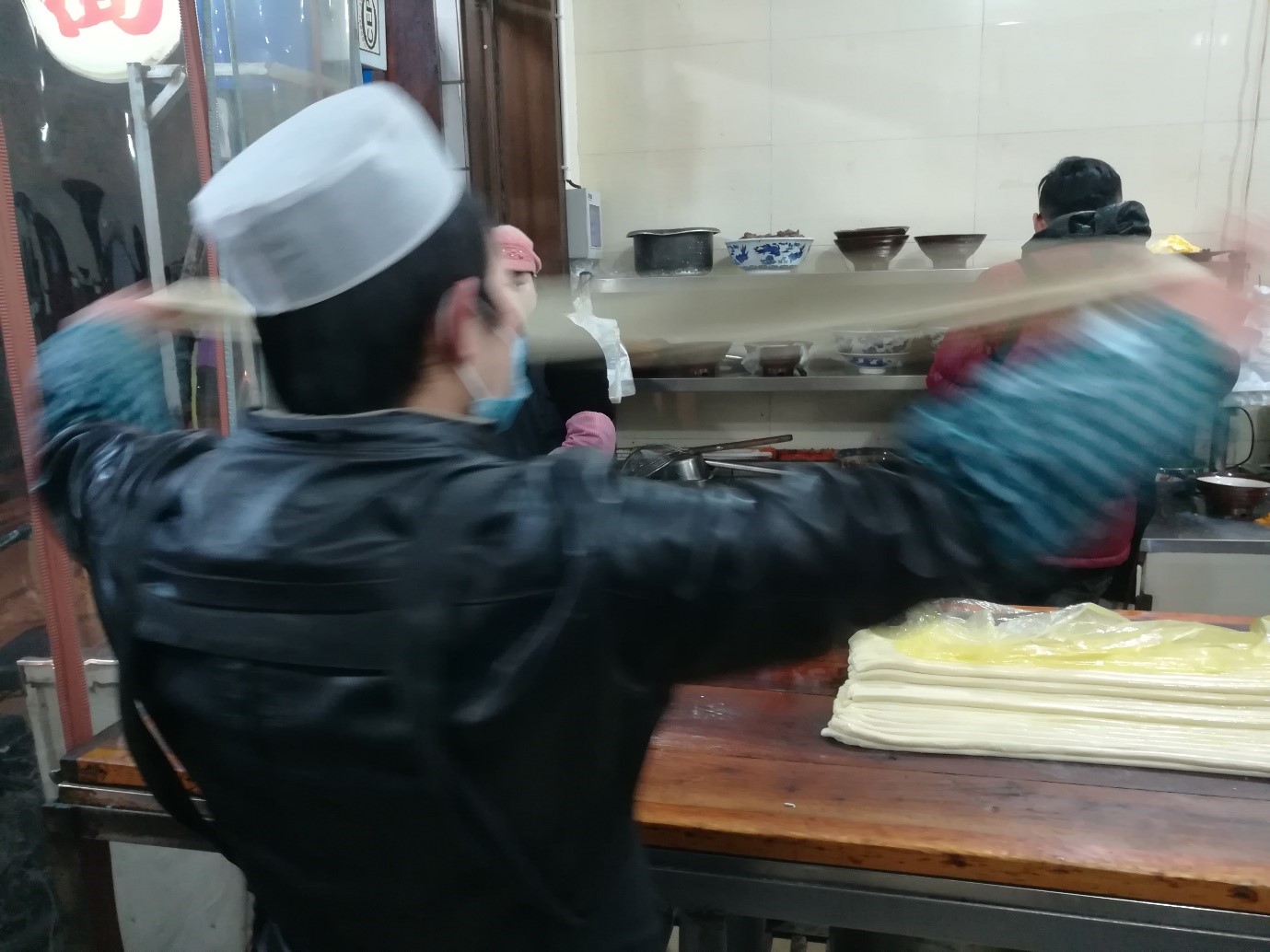
Muslim chef thrashing the dough to make biáng biáng miàn
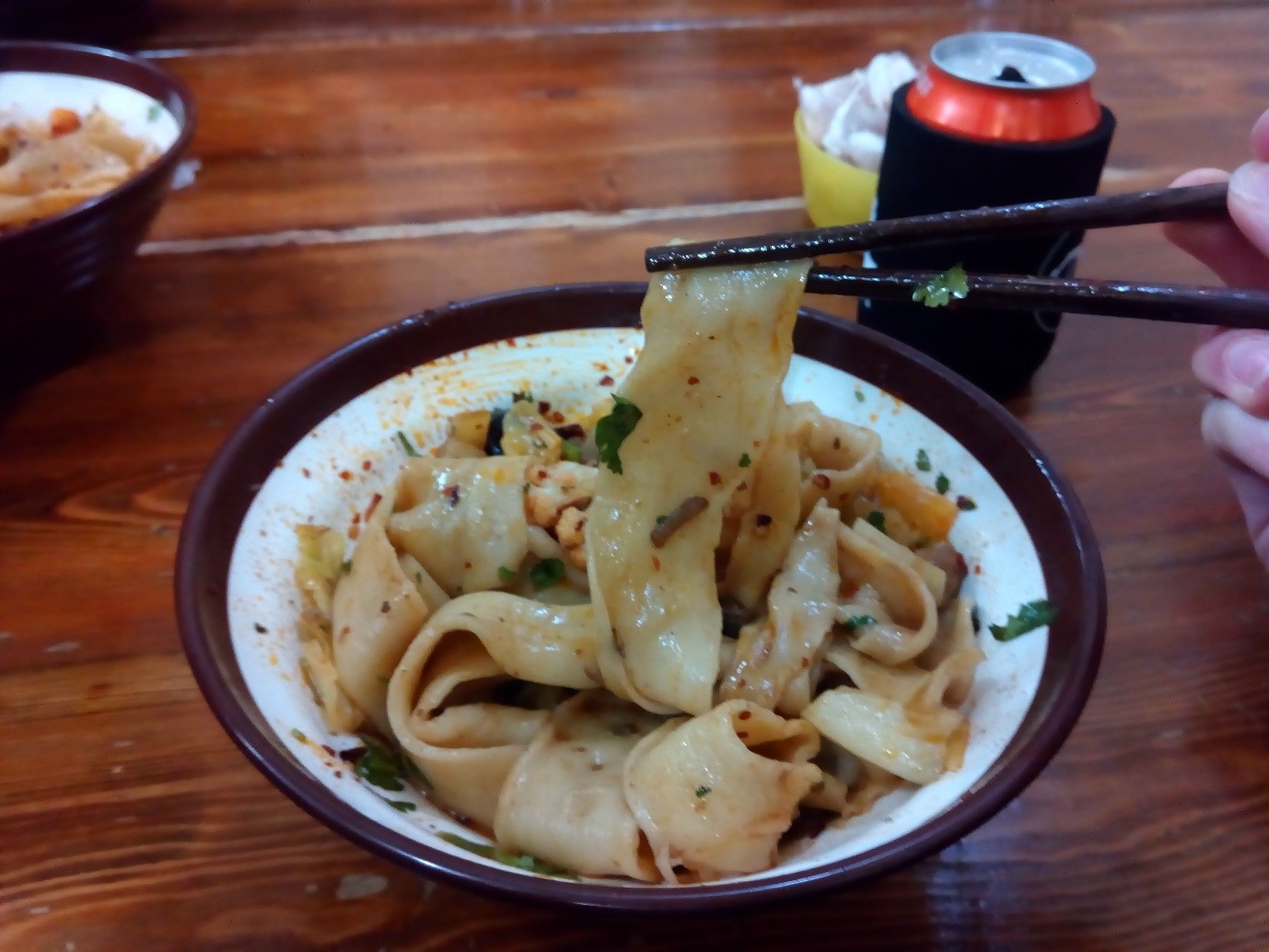
Biáng biáng miàn
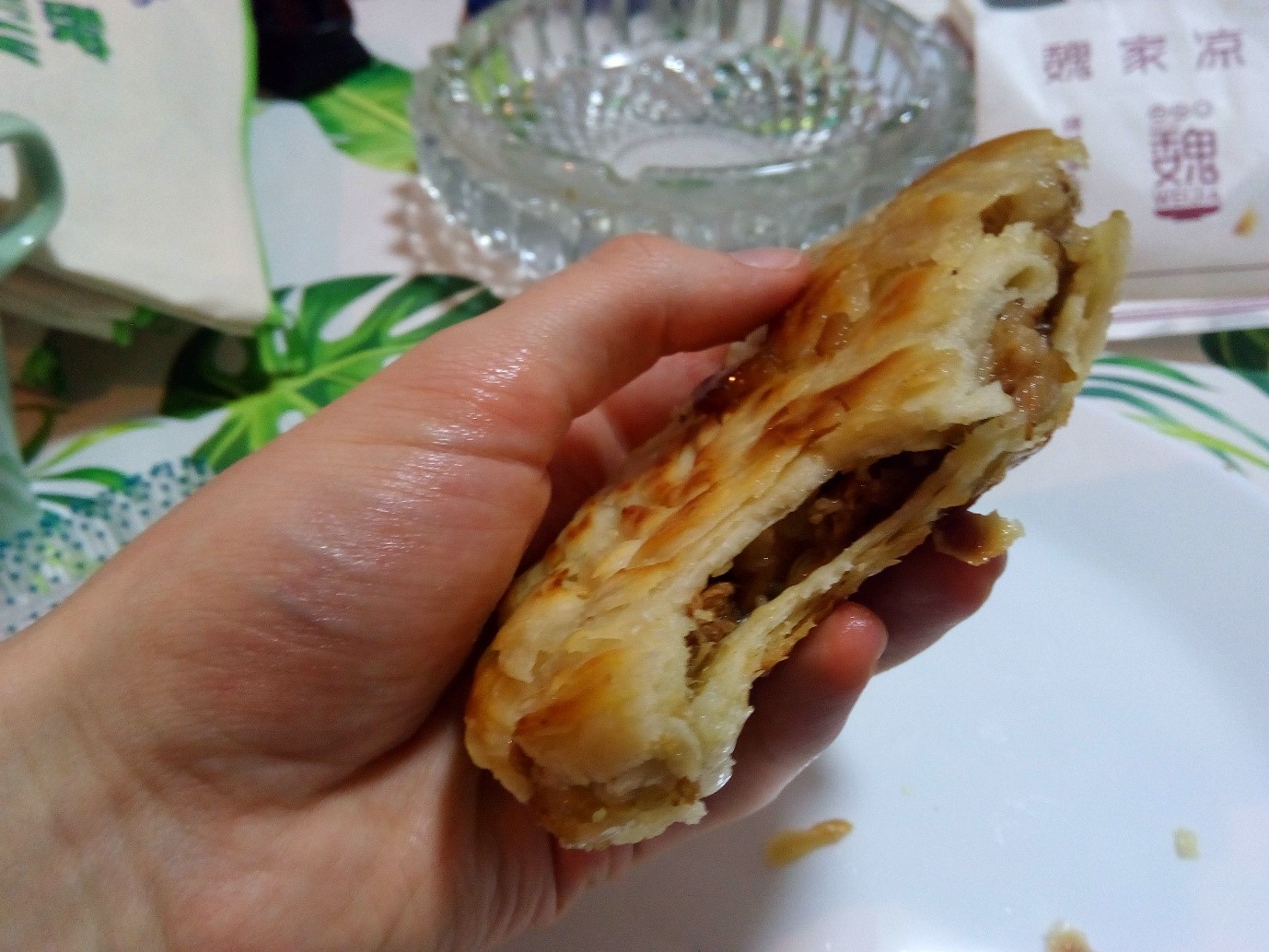
“Chinese Hamburger”
After seeing more of Xi’an’s historic sights, like the Bell Tower and Drum Tower, we decided to take a day trip to the most famous attraction: the Terracotta Army.
- Combien savez-vous à propos de l'armée de terre cuite?
- Elle s’est fait construite par Qin Shi Huang, le premier empereur de Chine.
- Il y a près de huit mille statues de soldats et chevaux.
- Elle est vieille; plus de 2.200 ans.
- L’empereur l’a construit pour l’accompagner après sa mort.
- Les traits de chaque statue (le visage, les cheveux, les vêtements, etc.) sont uniques.
- Les statues ont été découvertes en 1974 par des agriculteurs (qui étaient en train de creuser un puits).
The museum containing the army was an hour’s drive east of Xi’an and was divided into three separate pits, some of which were still being excavated. I’d seen pictures of the warriors before, but it was still a breath-taking moment walking into the first pit, being face-to-face with a clay army.
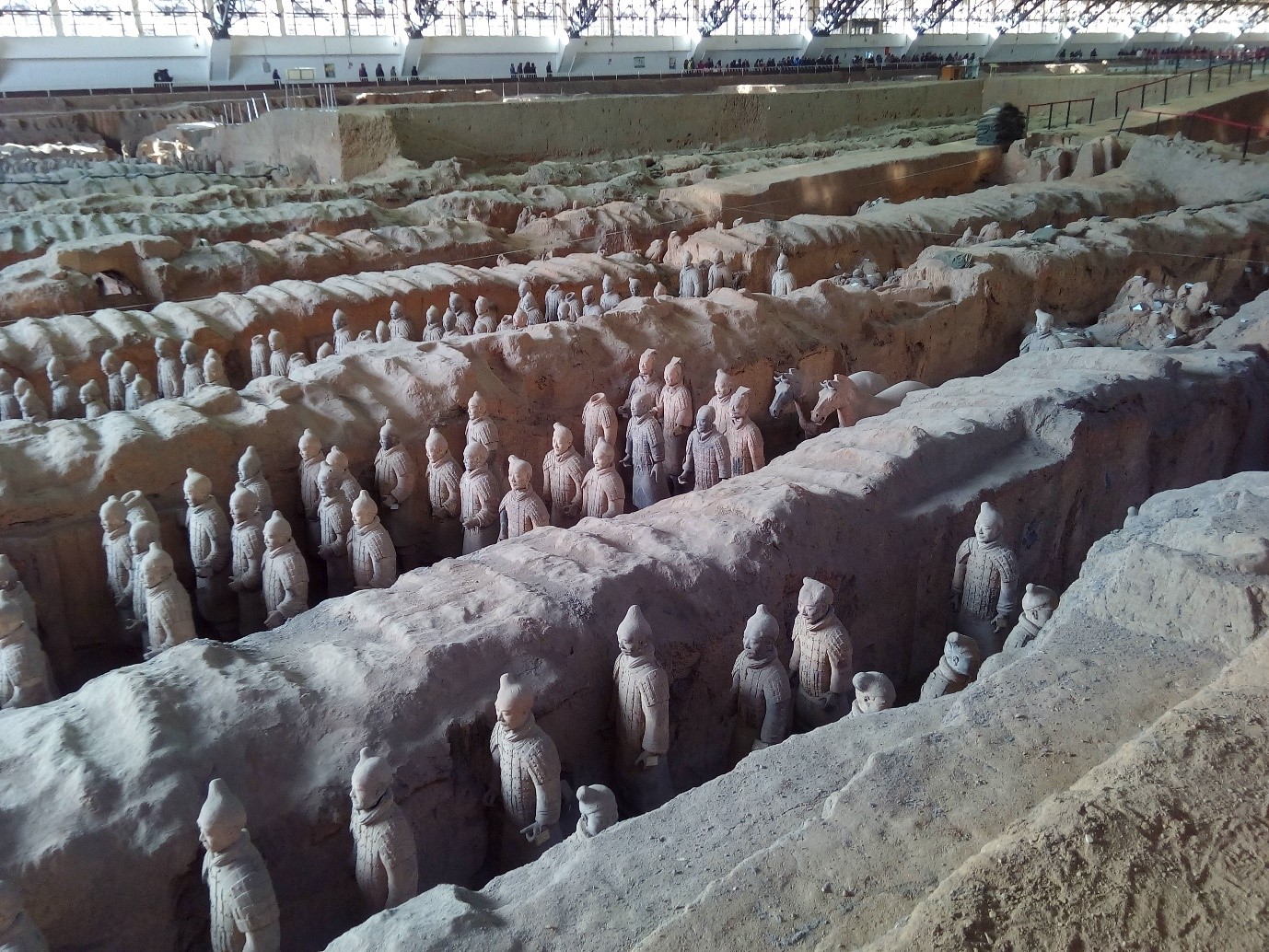
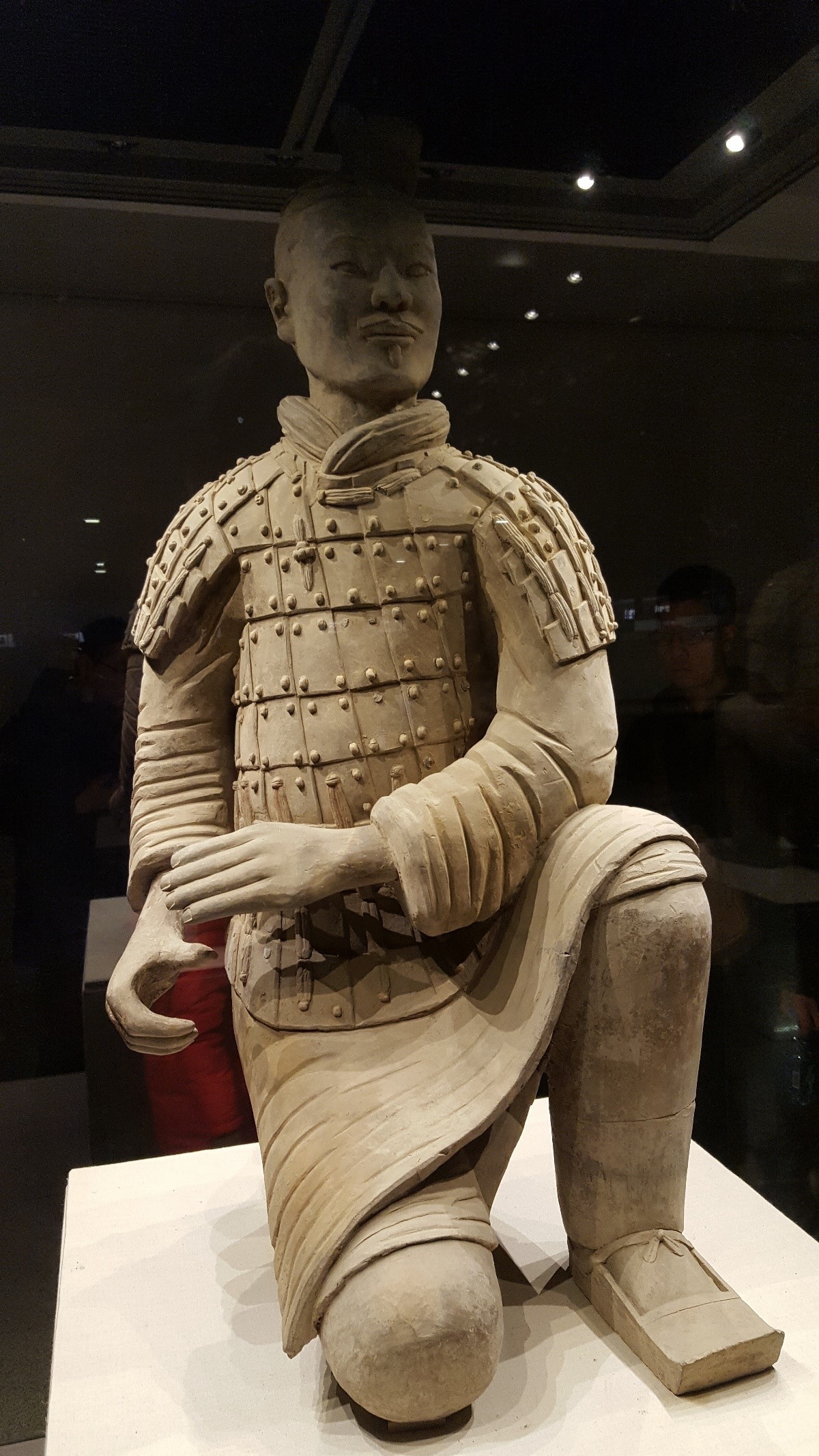
Seeing the statues first-hand was fascinating, thinking about how much effort must have gone into sculpting each one individually, all so that the emperor could maintain his power and status in the afterlife.
On our way home we stopped at another historic site – the Huaqing Hot Springs – where we could bathe in outdoor heated pools. Apparently, these hot springs are famous because a Chinese emperor in the 8th century spent all day bathing there with his favourite concubine, so much that he neglected his state business, eventually leading to a revolt. We didn’t intend to follow his example of over-indulgence; however, we were glad to have a lazy afternoon relaxing in the hot water. There was even a pool where small fish would eat the dead skin off our feet – not the most relaxing sensation!
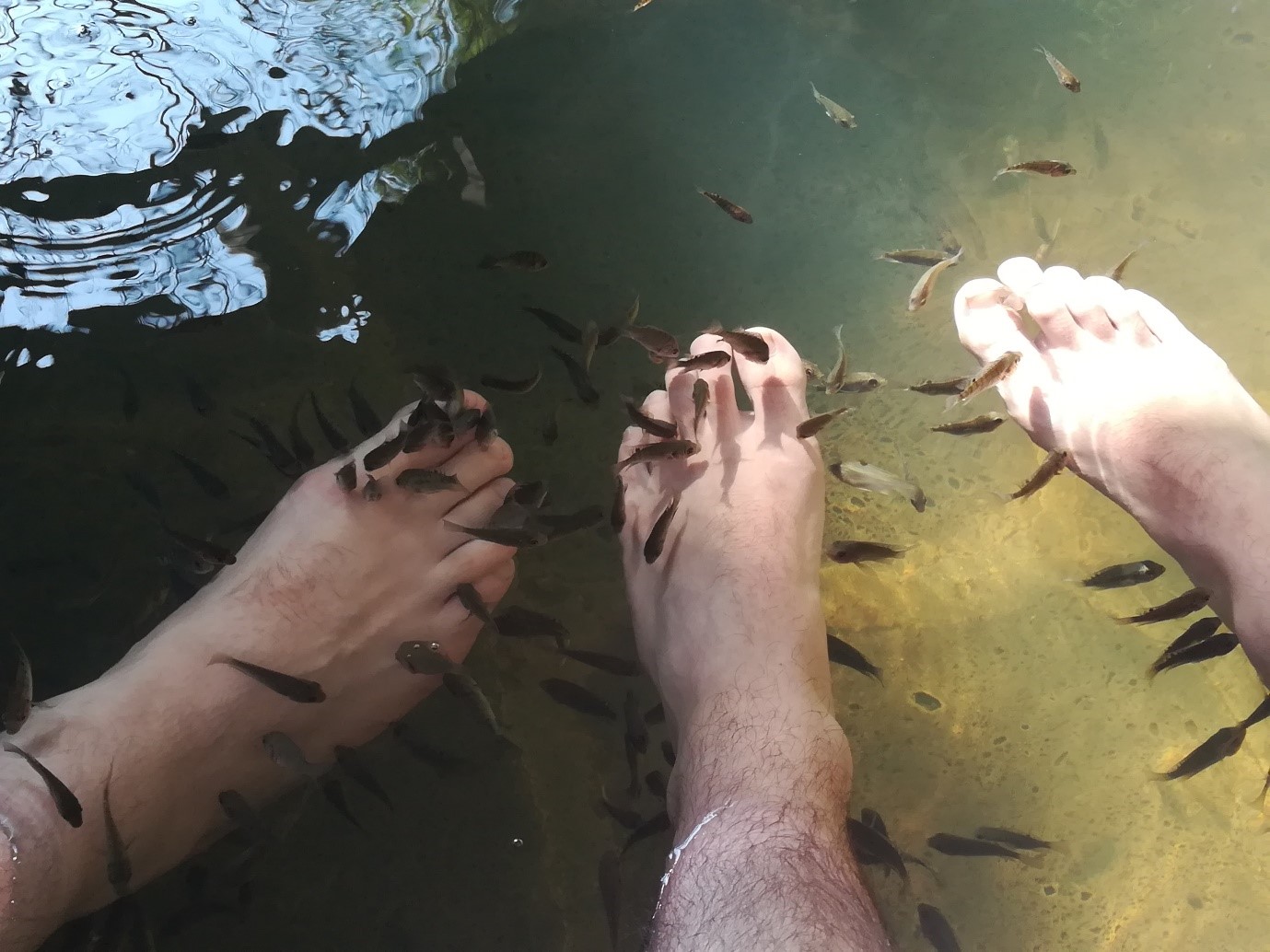
For anyone thinking of travelling in China, I highly recommend spending a few days in Xi’an (particularly for the Terracotta Army and a cycle ride on the city wall). I’ve never visited a city where the ancient history of China has been so well preserved, something which I feel has been lost in many other Chinese cities.
Soon in was time to pack my bags, say goodbye to my parents, and continue my adventure further west…